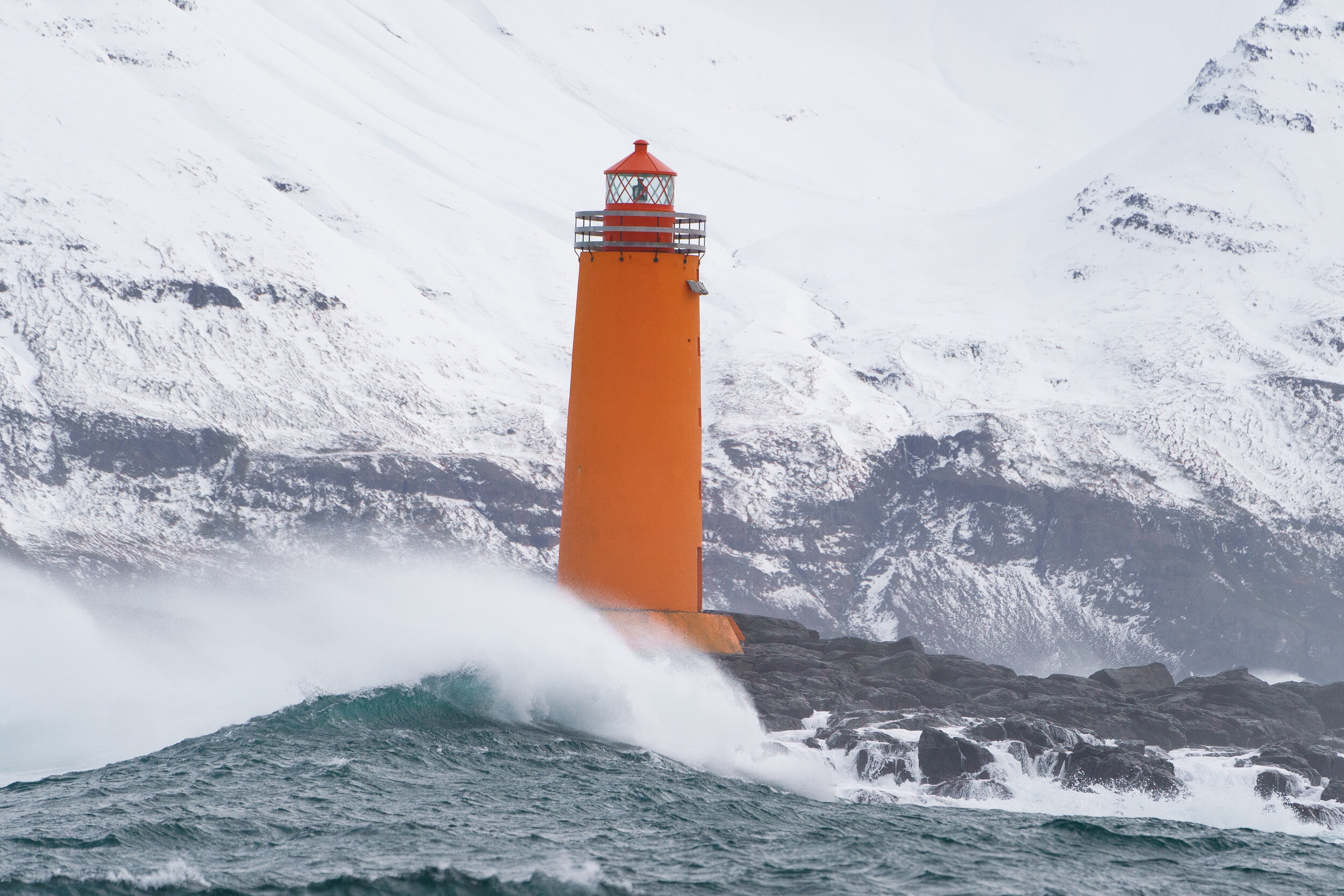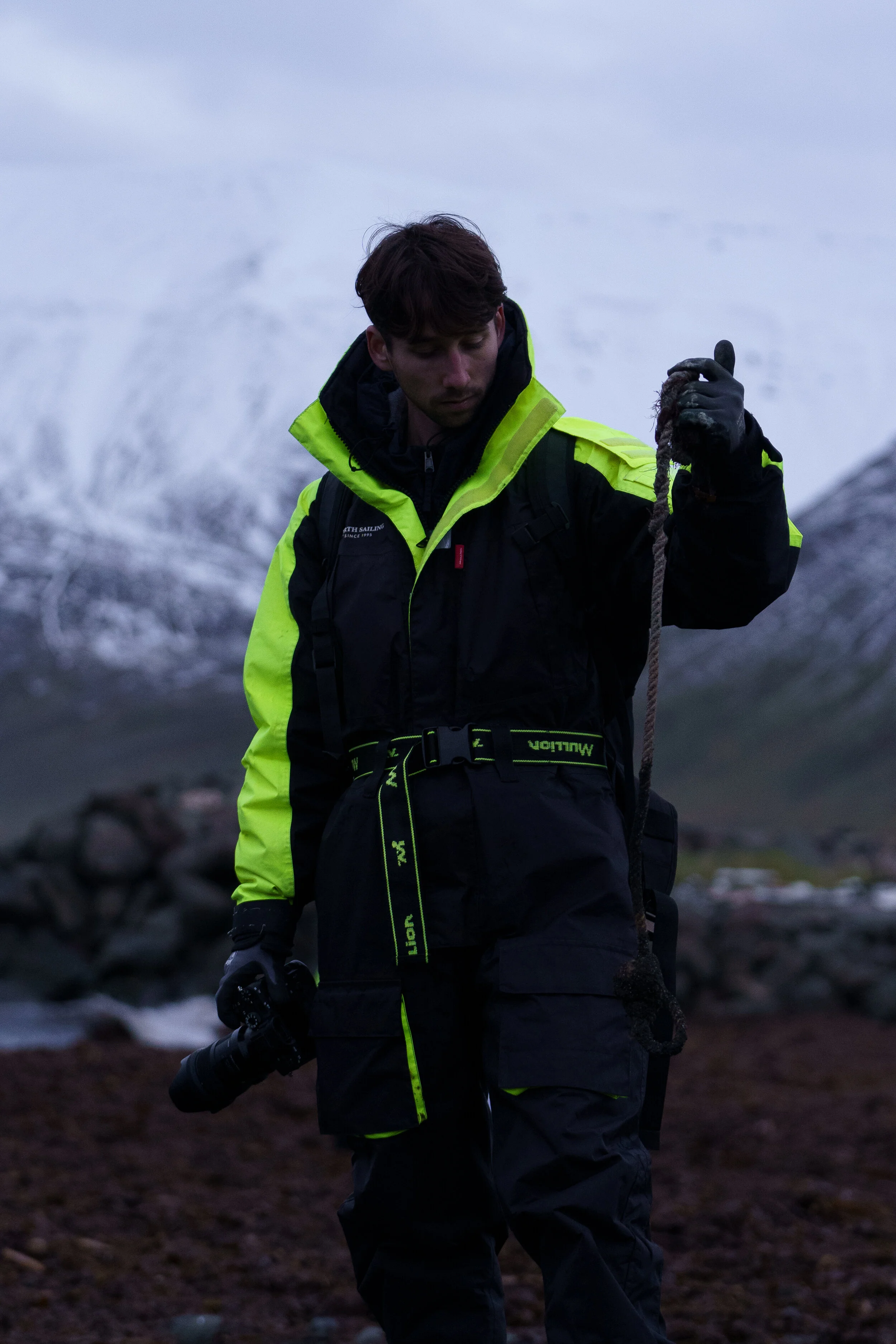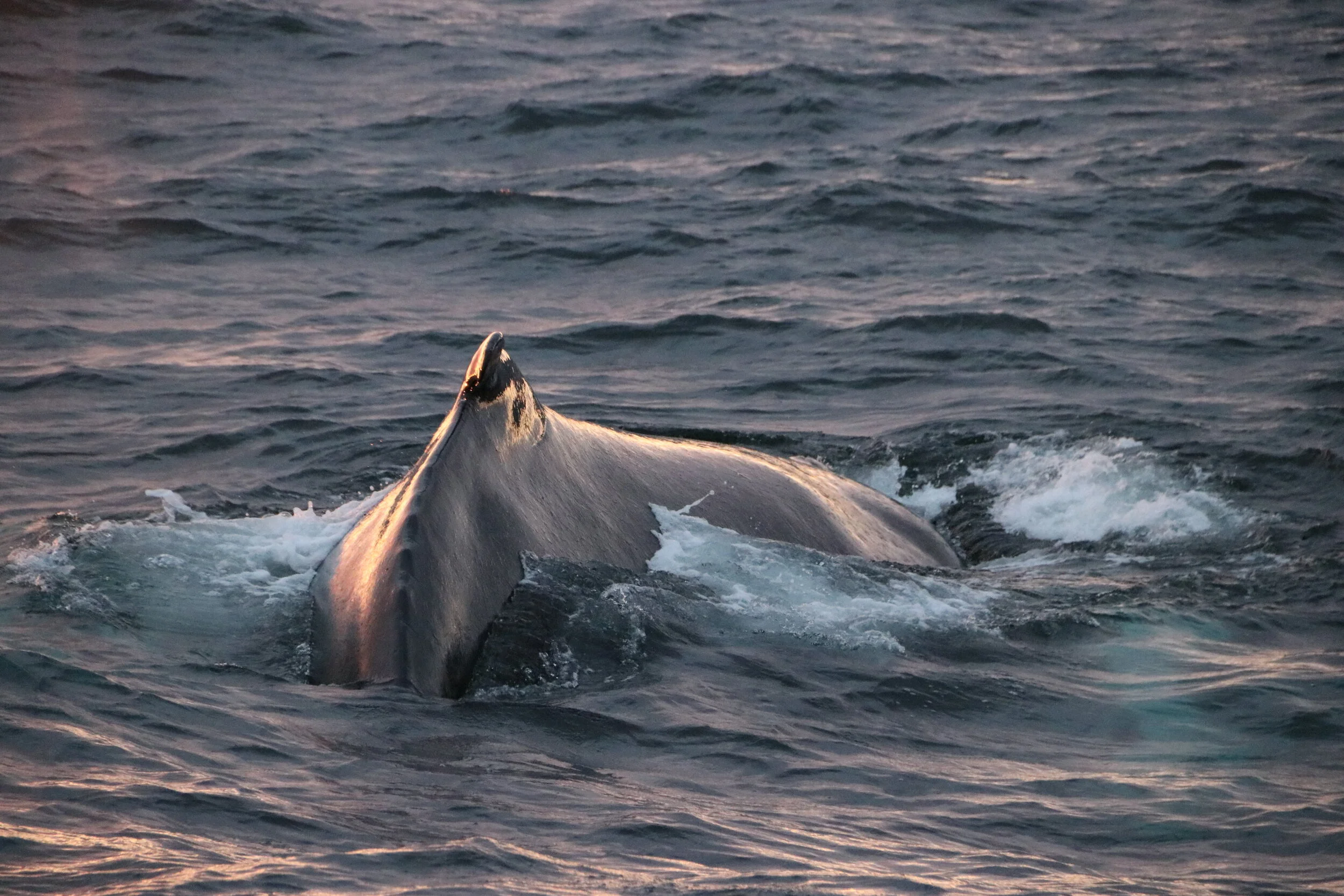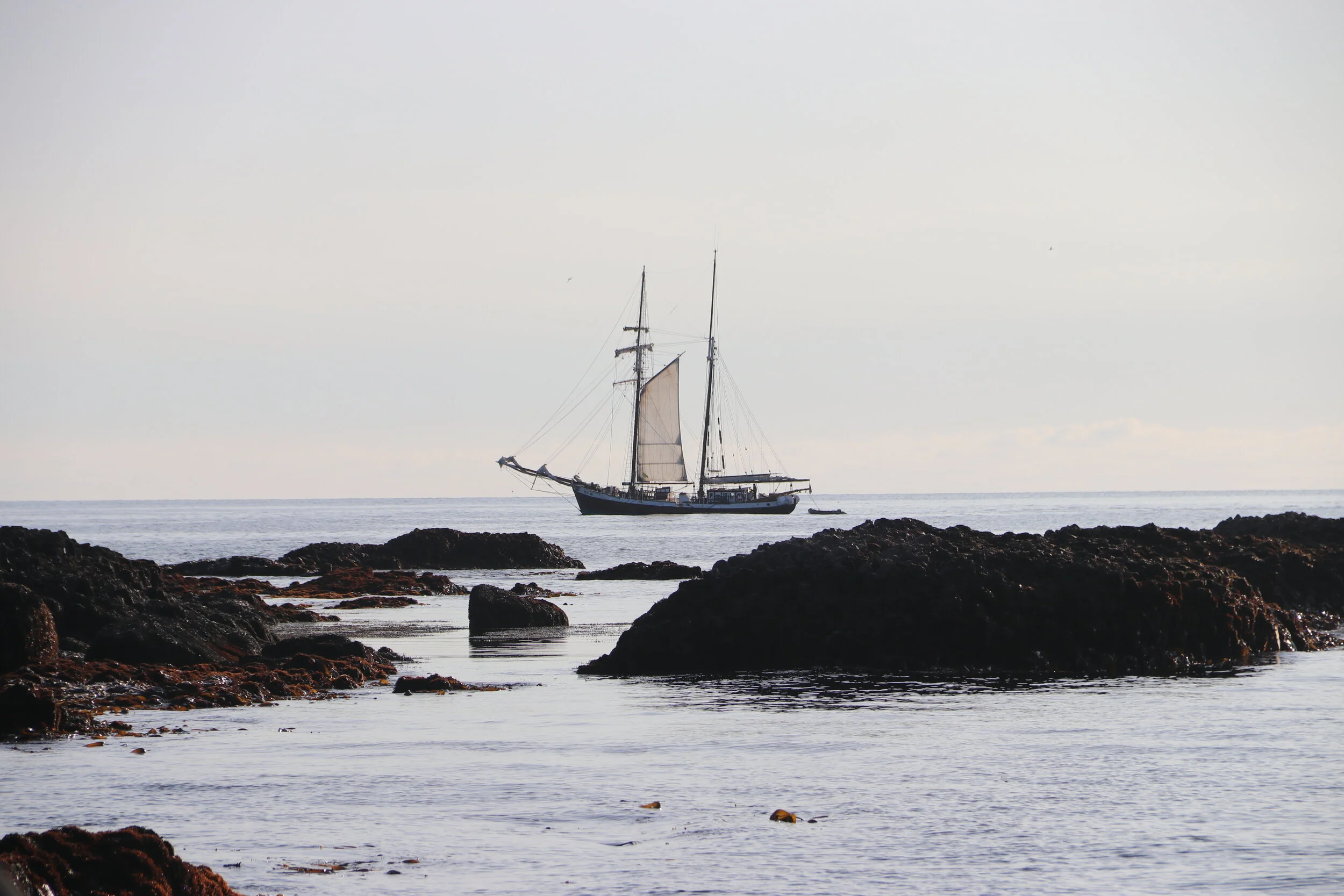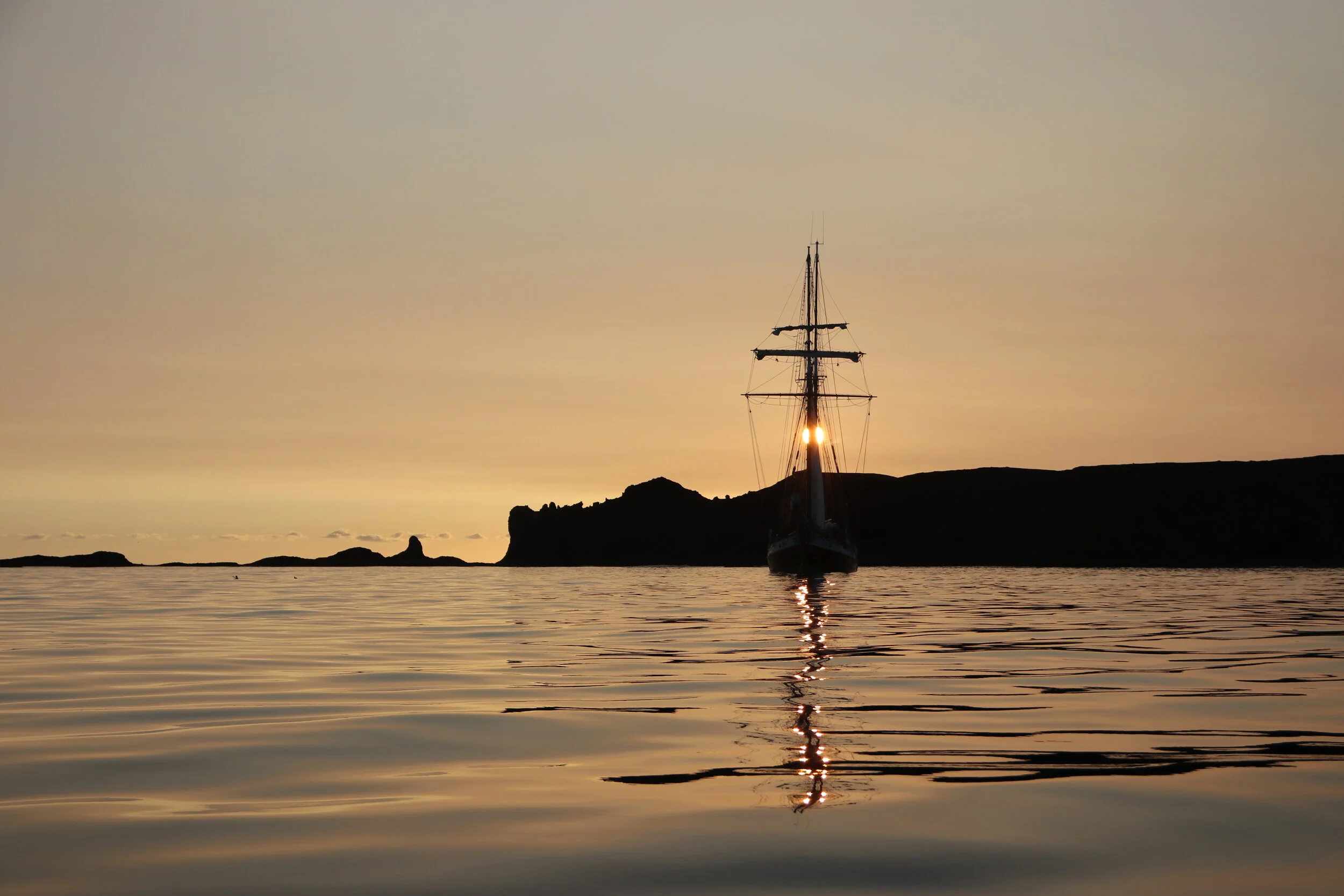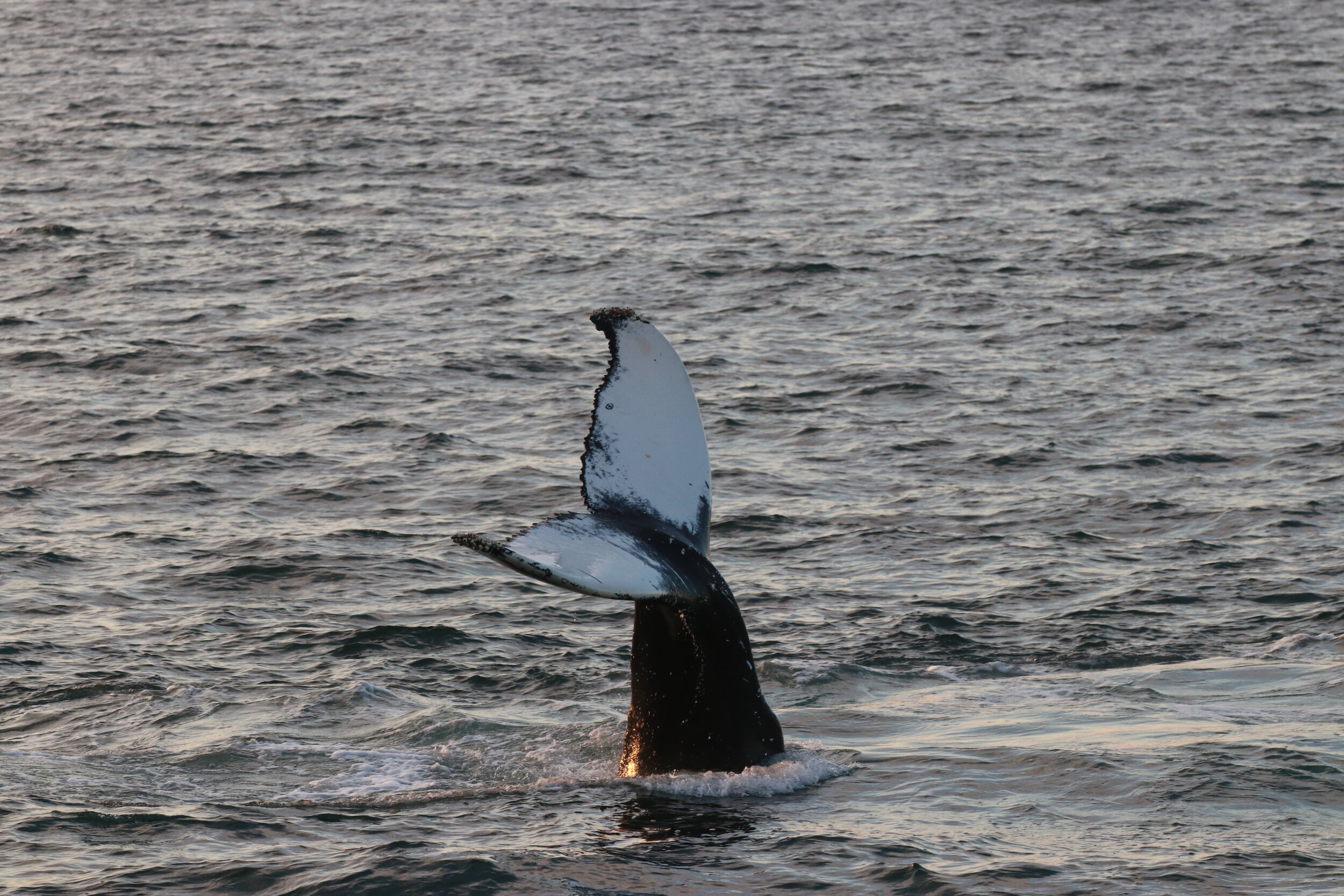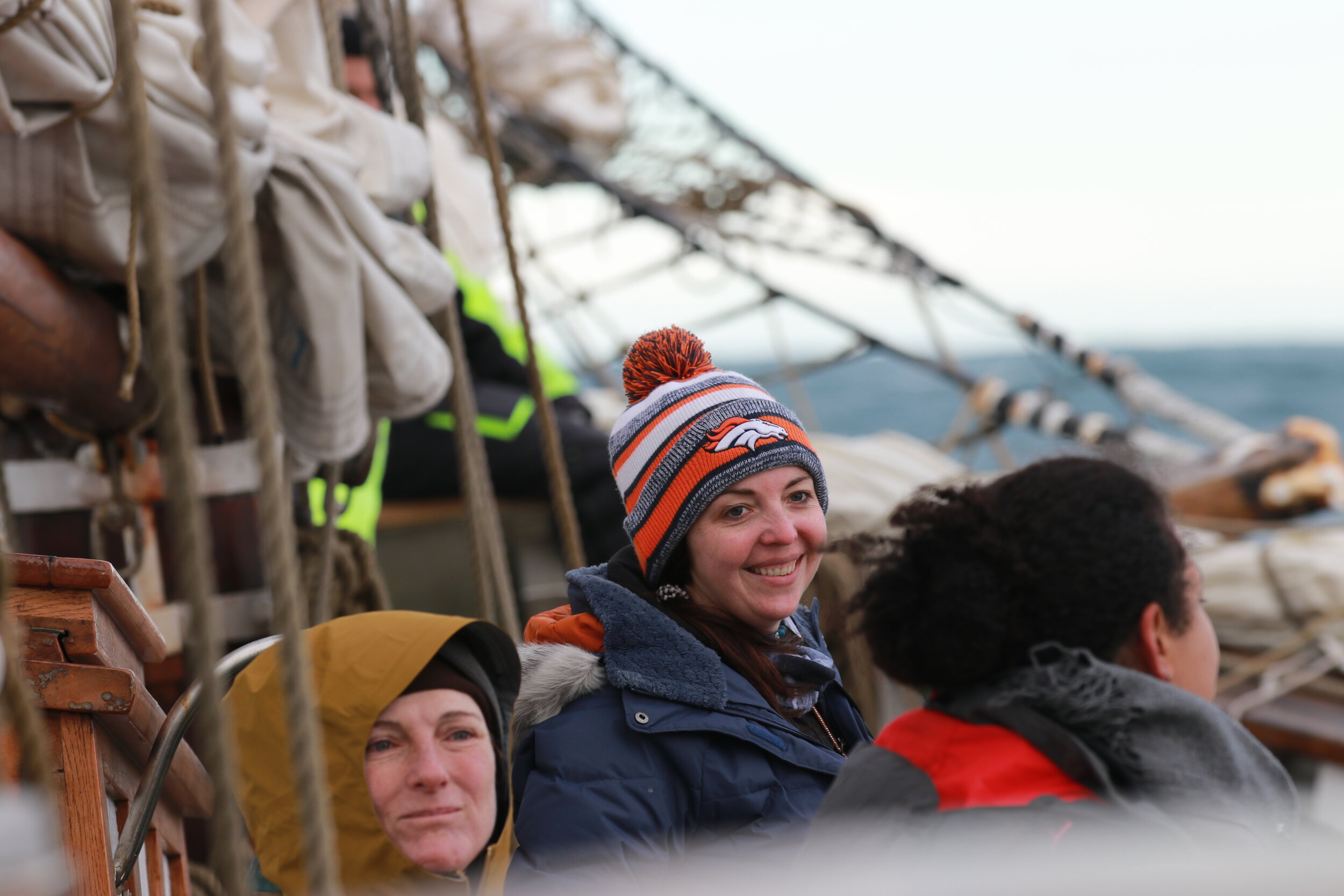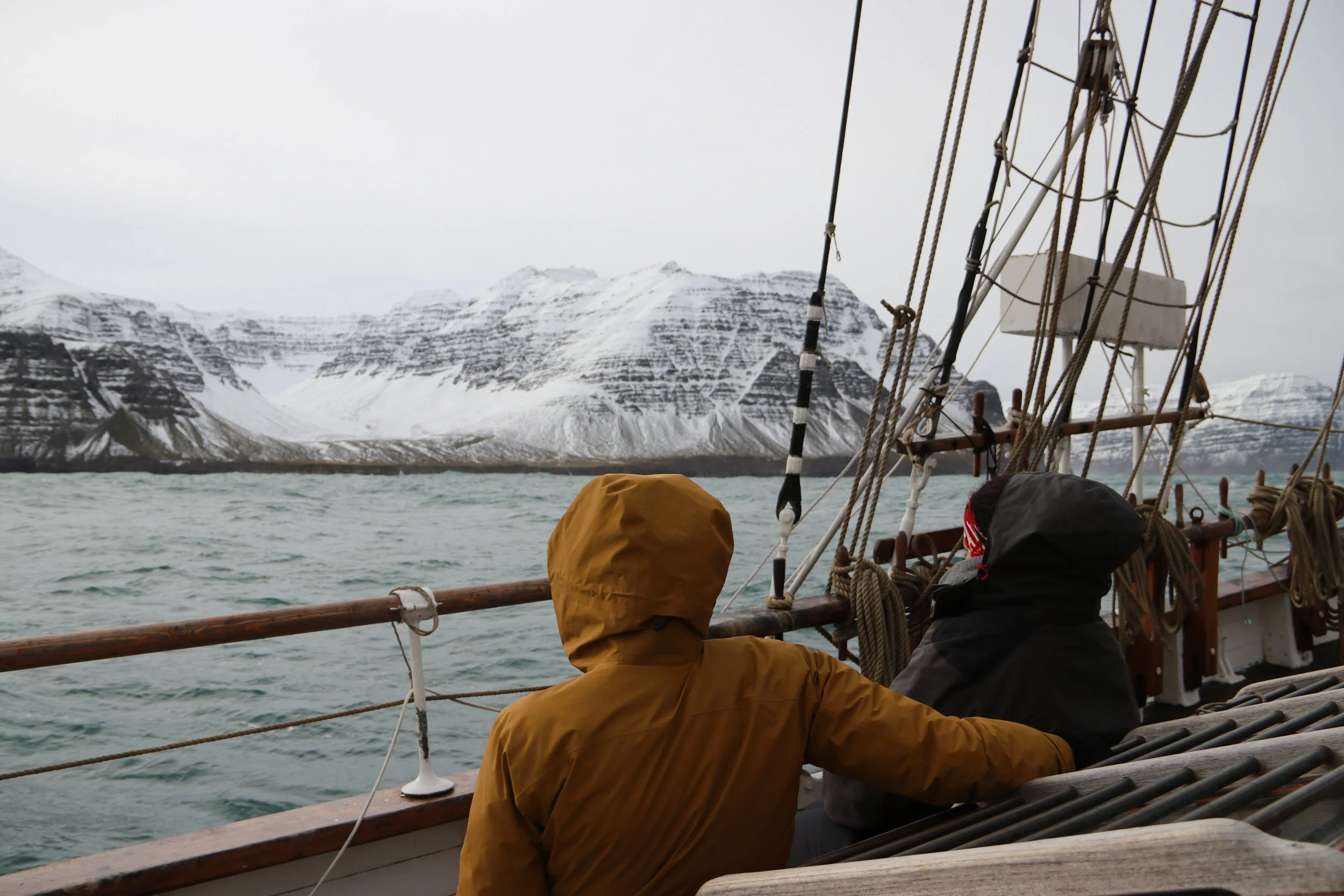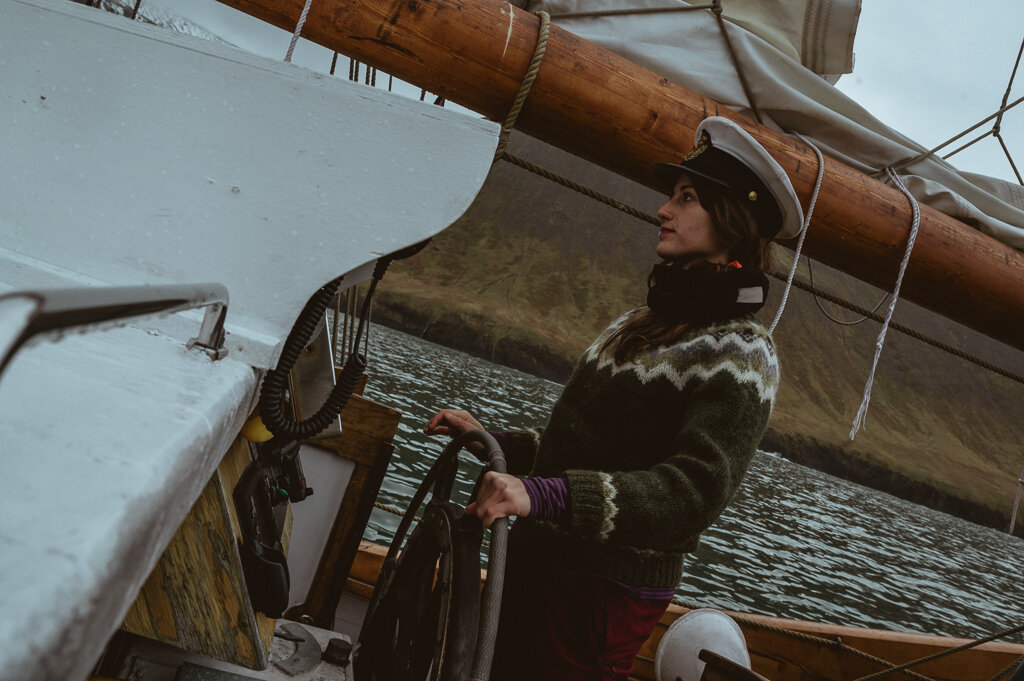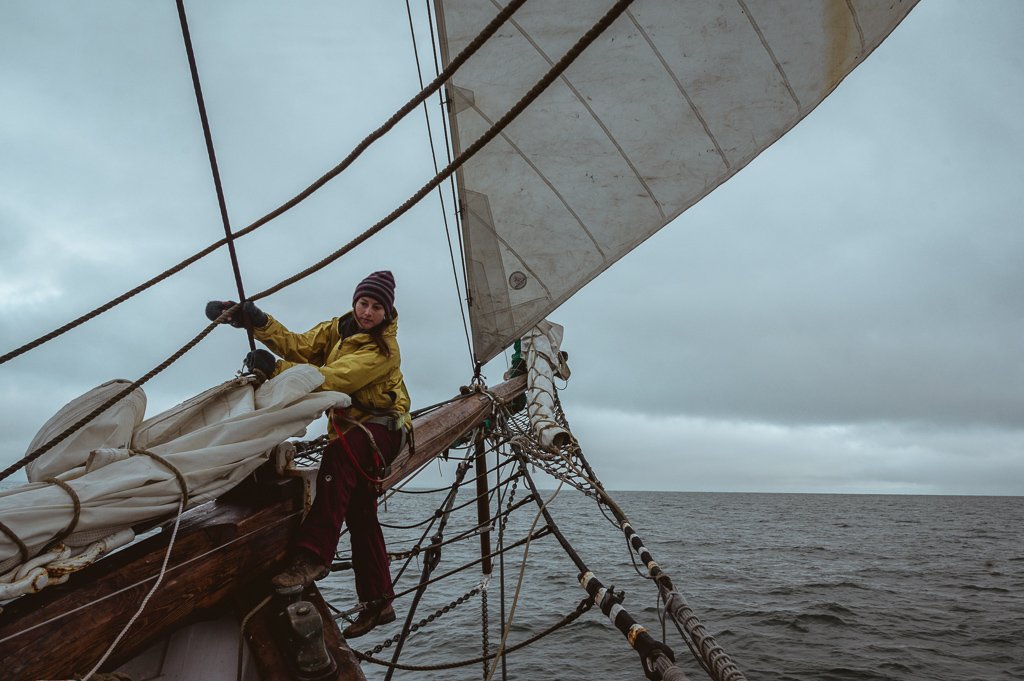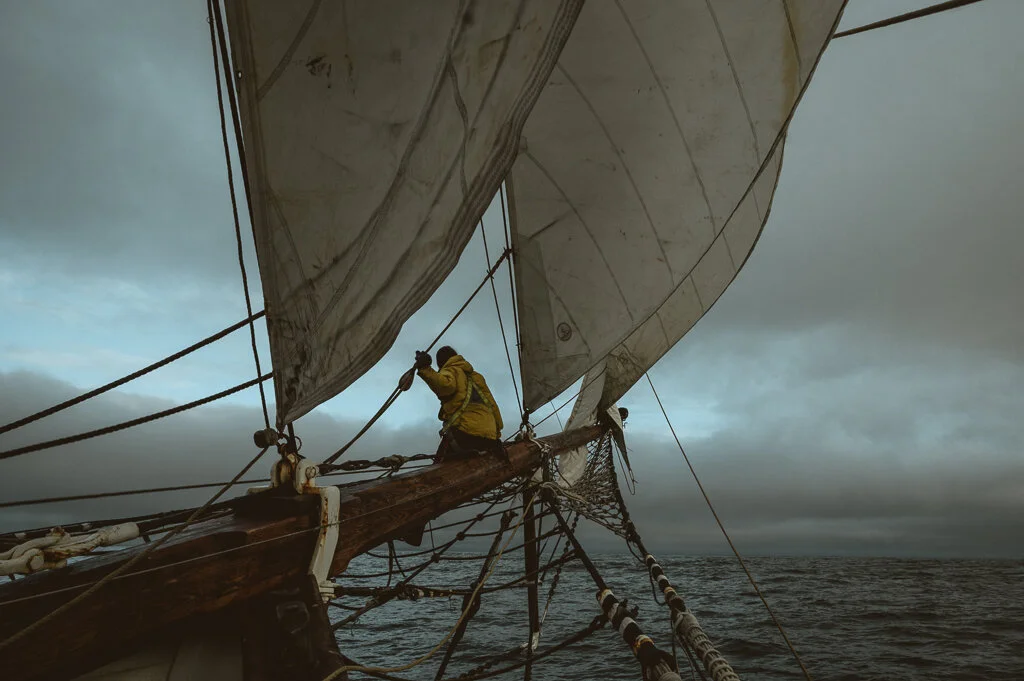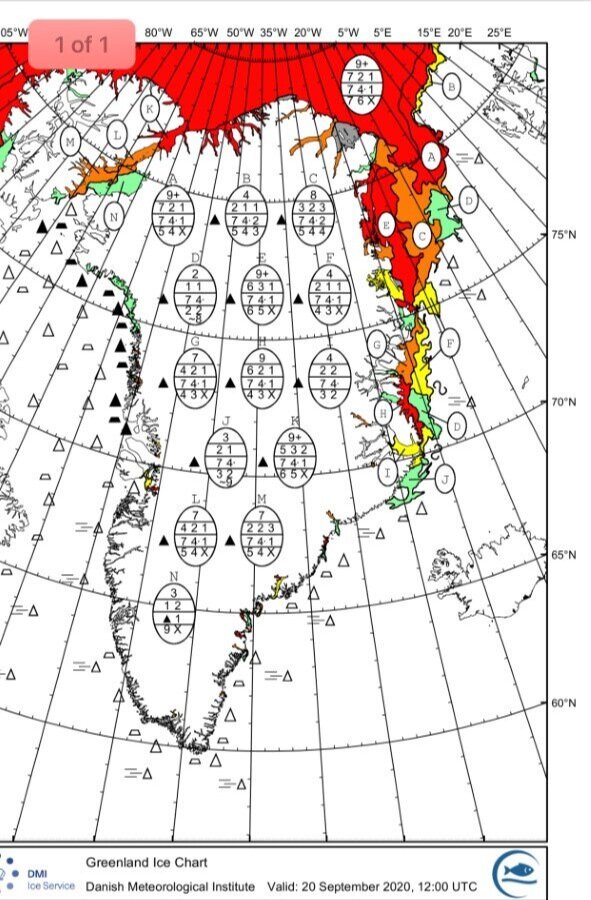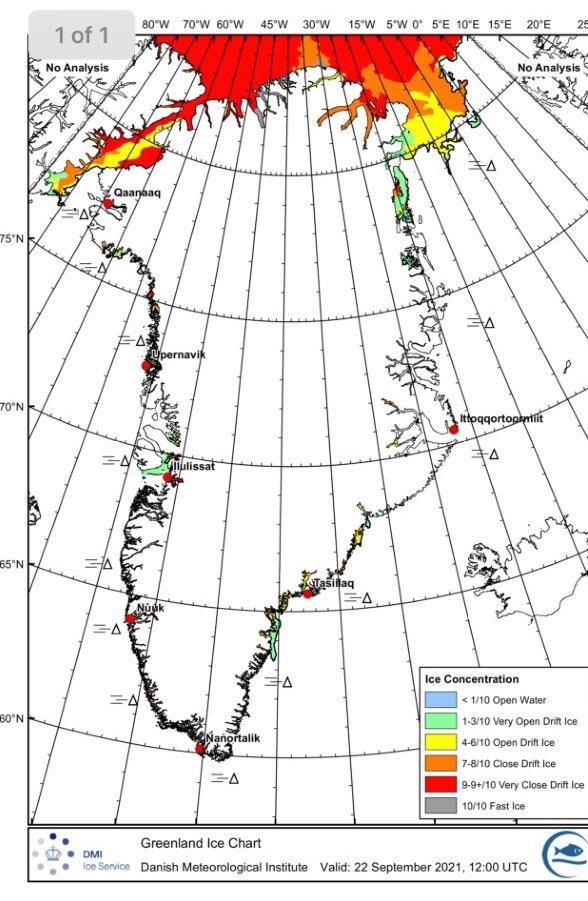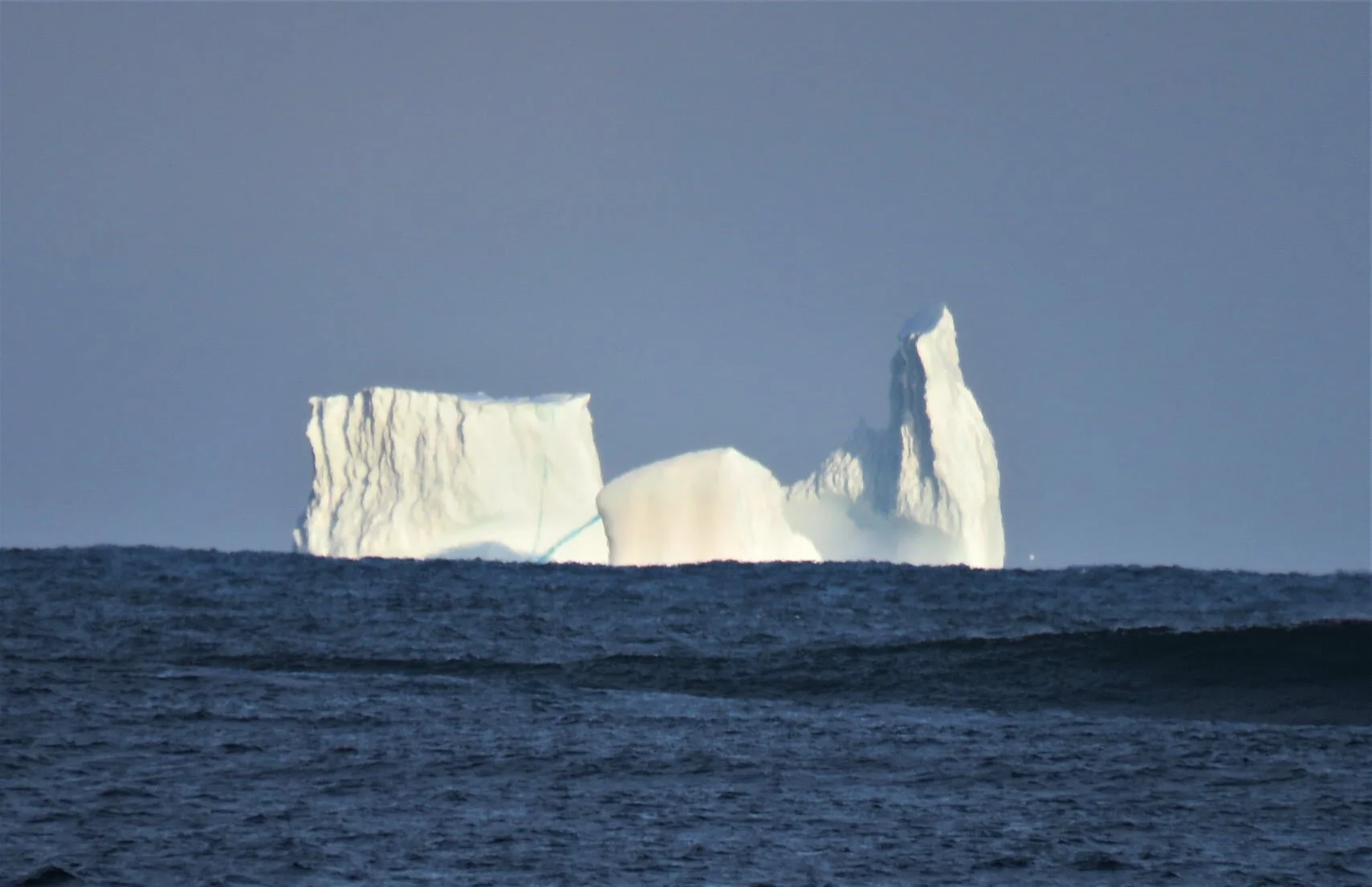Fall Expedition 2021: the story of a changing Arctic Ocean
By Belén Garcia Ovide, Safina Center Fellow
All photos © Ocean Missions
We are back in our home town of Húsavík after an incredible seven days of sailing and exploring the northern fjords! We learned many lessons on this trip. Being in the elements onboard a ship is a unique opportunity to study the health of our oceans. The weather did not make it easy for us to sail, however we still scouted some of the most beautiful islands in the country, crossed the Arctic Circle, performed microplastic surveys, enjoyed beautiful hikes and unforgettable conversations, photographed the first fresh snow, and admired the incredible color palette of the mountains, typical of an Icelandic fall.
“It was a wonderful experience. Life changing, really, I felt completely out of my comfort zone for the most part. It was good to be challenged and take the adventure with an open heart and mind.” – said Priscila, one of our participants, who has never sailed before.
On this trip we learned more about our climate than ever before. We witnessed natural phenomena seldomly reported in Iceland. For example, each year the semipermanent Icelandic Low, a center of low atmospheric pressure located between Iceland and southern Greenland, leads to intense weather in the fall and winter, often bringing strong northerly winds and storms across the Denmark Strait. However, this year, we have noticed some unusually extreme weather events. For instance, this September the majority of whale watching tours were cancelled for almost three weeks due to extremely high swells and strong winds, on average 7-meter waves with wind gusts up to 50- 60 knots in Skjálfandi bay. Húsavík saw waves up to 12 meters outside the bay–it was nearly hurricane conditions.
Screenshot of weather conditions. The blue-purple color indicates 50 knots of wind force (www.windy.com)
Coinciding with the spring tides, the weather damaged piers and harbors, while the the heavy rains led to flooding events in the nearby areas, forcing several families to evacuate. While this occurred on the mainland, we spotted two large icebergs from Melrakkaslétta peninsula in Northeast Iceland, while we searched for shelter in Hrísey Island onboard Schooner Ópal. Icebergs approaching Iceland is something we do not see often. Yet, recently we do know that there have been similar sightings.
In the meantime, a disoriented tagged and tracked walrus was discovered traveling from Europe, reaching south Iceland a few days before, hopefully on their way back to the Arctic, where he or she belongs.
Throughout our trip we wondered if the reason for these weather events could be related to the low levels of sea ice in the coast of Southeast Greenland, sea ice which usually slows down the waves.
Sea Ice conditions: from left to right; September 2019, 2020 and 2021
(Danish Meteorological institute)
Iceberg spotted North of Iceland (Rannsóknastöðin Rif - Rif Field Station)
Floods near Húsavík. www.640.is Photo credit: Hafþór Hreiðarsson
Globally we know that it has been an intense year of extreme climate and natural catastrophes in many places around the planet. Volcanos, wildfires, and extreme storms destroy our ecosystems and affect people’s livelihoods.
We want to send a message of support for all those people suffering the climate consequences of a sick planet. After this trip, more than ever before, we realize how much we depend on thriving oceans and healthy ecosystems.


